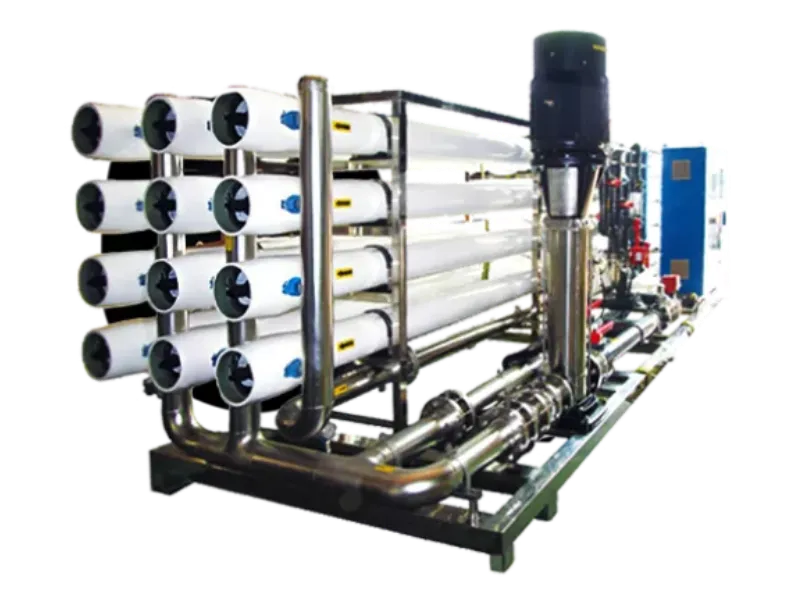
1 /
1
BW Brackish Water Desalination System
Description:
Industrial engineering、Agricultural water、Aquaculture water、Aedical water、Medical water、Domestic water、Semiconductor、Pharmaceuticals, and other industrial sectors
-
Bitter Salty Water Technology is essentially desalination, which involves removing salt from saline water to make it suitable for consumption or meeting drinking water standards.
Bitter salty water refers to water with chloride levels exceeding a certain threshold (typically 250mg/L according to national standards), which requires treatment to remove chloride. The removal of chloride is usually achieved through a process using reverse osmosis technology, which has developed in recent years as a water treatment technique, especially suitable for addressing chloride in water. Desalination devices for bitter salty water typically employ this latest reverse osmosis technology.
These desalination devices can be personalized according to the user's specific needs, often utilizing advanced back pressure techniques, which can significantly reduce operational costs and equipment technology expenses for users.
Currently, the majority of bitter salty water desalination employs reverse osmosis and electrodialysis, with reverse osmosis being the primary method. Although 70% of existing desalination capacity utilizes distillation methods, mainly multi-stage flash distillation, this scenario is changing. Reverse osmosis, with its lower investment and energy consumption, is increasingly becoming the preferred choice, indicating a trend of newer technologies overtaking traditional methods.
-
The conventional process flow of reverse osmosis includes the following steps: raw water → pretreatment system → high-pressure water pump → reverse osmosis membrane assembly → purified water.
The pretreatment system varies depending on the quality of the raw water and the desired output water quality. It may involve processes such as coarse filtration, activated carbon adsorption, and fine filtration.
Fine filtration is essential to protect the reverse osmosis membrane and extend its lifespan.
Additionally, composite membranes are highly sensitive to free chlorine in water, so activated carbon adsorption is commonly included in the pretreatment system to remove chlorine.
-

-
System IntroductionBitter Salty Water Technology is essentially desalination, which involves removing salt from saline water to make it suitable for consumption or meeting drinking water standards.
Bitter salty water refers to water with chloride levels exceeding a certain threshold (typically 250mg/L according to national standards), which requires treatment to remove chloride. The removal of chloride is usually achieved through a process using reverse osmosis technology, which has developed in recent years as a water treatment technique, especially suitable for addressing chloride in water. Desalination devices for bitter salty water typically employ this latest reverse osmosis technology.
These desalination devices can be personalized according to the user's specific needs, often utilizing advanced back pressure techniques, which can significantly reduce operational costs and equipment technology expenses for users.
Currently, the majority of bitter salty water desalination employs reverse osmosis and electrodialysis, with reverse osmosis being the primary method. Although 70% of existing desalination capacity utilizes distillation methods, mainly multi-stage flash distillation, this scenario is changing. Reverse osmosis, with its lower investment and energy consumption, is increasingly becoming the preferred choice, indicating a trend of newer technologies overtaking traditional methods.
-
Process FlowThe conventional process flow of reverse osmosis includes the following steps: raw water → pretreatment system → high-pressure water pump → reverse osmosis membrane assembly → purified water.
The pretreatment system varies depending on the quality of the raw water and the desired output water quality. It may involve processes such as coarse filtration, activated carbon adsorption, and fine filtration.
Fine filtration is essential to protect the reverse osmosis membrane and extend its lifespan.
Additionally, composite membranes are highly sensitive to free chlorine in water, so activated carbon adsorption is commonly included in the pretreatment system to remove chlorine.
-
Specification Sheet


